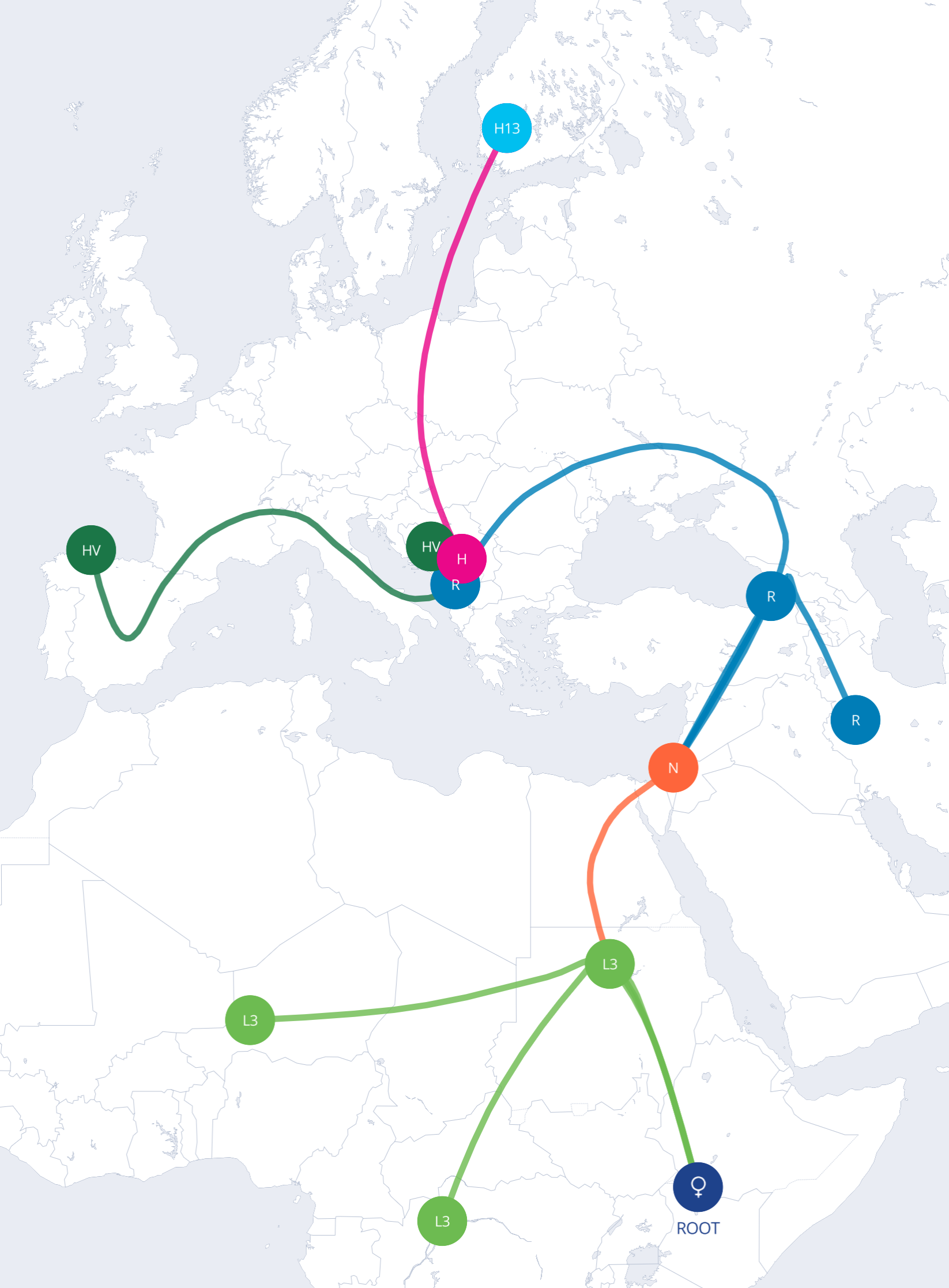
In This Article
In This Article
Genetic mutations might sound like something from a movie, if not something concerning. But in reality, it’s a routine part of your life.
Every day our DNA changes in small ways. But what exactly are these mutations, why do they happen, and how do they affect you?
Here, we'll break down everything you need to know about mutations, from their causes and types to their health implications and why understanding them matters.
A genetic mutation is a change in your DNA. Some changes are neutral, which don’t affect your health or bodily functions.
But others can be harmful, causing diseases or disorders like cystic fibrosis. However, some changes can result in beneficial traits, such as lactose tolerance in adulthood.
Mutations affect these two types of cells:
Even seemingly big differences among people can start from mutations. For example, different alleles—gene variants born from older mutations—determine eye color and hair texture.
Mutations range from minor changes to substantial rearrangements. These include:
Know Your DNA Reviews

Don't miss out on the opportunity to learn more about yourself. Read our best DNA test page to find the best one for you.
Some mutations can lead to harmful diseases and conditions. Here’s a list of genetic conditions and the mutation that causes them:
Understanding common genetic mutations is important for family planning and carrier screening. It provides you with valuable information. Consult with healthcare professionals for guidance and to explore options for managing the risks associated with genetic conditions.
Genetic mutations happen during major cellular processes such as mitosis and meiosis. Mitosis is responsible for the division of somatic (body) cells, while meiosis is a form of cell division in germ cells, specifically in creating sperm and egg cells.
During mitosis, changes or errors occur in the DNA sequences, resulting in mutations that are passed on to both end-product cells. During meiosis, genetic mutations can occur during genetic recombination.
This occurs when homologous chromosomes exchange genetic material, introducing new gene combinations and enhancing genetic diversity.
Genetic mutations can happen because of various factors, such as:
Aside from harmful mutations that can influence our risk of disease, these mutations can be beneficial at times. For instance, your DNA can develop a lactose tolerance, allowing you to digest milk.
There are also Tibetan populations who have developed a unique mutation that allows them to adapt to low-oxygen or high-altitude environments (EPAS1).
Over time, these advantageous mutations spread through populations via natural selection, driving genetic diversity and evolutionary progress.
Genetic testing is a powerful tool that can identify genetic mutations. It can provide valuable information about a person’s risk of certain genetic conditions.
DNA tests take a genetic sample (blood, saliva, or tissue), and extract the DNA before analyzing it. The test performs DNA sequencing to analyze the whole genome or target specific regions associated with known genetic conditions.
The DNA is later compared to reference sequences to identify the variations or mutations. Finally, a genetic expert interprets the information to determine any of the following:
After getting your genetic test results, the next step is to seek clinical consultation. Genetic counselors and healthcare professionals can discuss the results with you or your family.
They explain the implications of identified mutations and potential preventive or therapeutic measures. Identified mutations are assessed for their relevance to health.
Some mutations may increase the risk of certain diseases, while others may have no significant impact.
Genetic testing is generally accurate, but accuracy depends on many factors. The type, the quality of the laboratory conducting the analysis, and the complexity of interpreting genetic variations affect the test's accuracy.
Advanced techniques like next-generation sequencing have significantly enhanced the accuracy of identifying genetic mutations.
Often, there’s very little you can do to prevent genetic conditions. Yet, there are some things you can do to manage and help minimize the risks.
First, consider identifying potential genetic risk through genetic testing. You can work with healthcare professionals to develop health management strategies if you discover a genetic predisposition to certain conditions.
Adopting a healthy lifestyle is another critical aspect of managing genetic risks. Some examples include:
Know Your DNA Reviews

Looking for a DNA test that's accurate and can tell you about your health and heritage?
